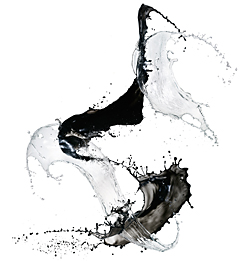All human activity can be viewed as an interplay between two contrary but equally essential factors—vision and repetitive routine. Vision is the creative element in activity, whose presence ensures that over and above the settled conditions pressing down upon us from the past we still enjoy a margin of openness to the future, a freedom to discern more meaningful ends and to discover more efficient ways to achieve them. Repetitive routine, in contrast, provides the conservative element in activity. It is the principle that accounts for the persistence of the past in the present, and it enables the successful achievements of the present to be preserved intact and faithfully transmitted to the future.
Although they pull in opposite directions—the one toward change, the other toward stability—vision and routine mesh in a variety of ways, and every course of action can be found to participate to some extent in both. For any particular action to be both meaningful and effective, the attainment of a healthy balance between the two is necessary. When one factor prevails at the expense of the other, the consequences are often undesirable. If we are bound to a repetitive cycle of work that deprives us of our freedom to inquire and understand things for ourselves, we soon stagnate, crippled by the chains of routine. If we are spurred to action by elevating ideals but lack the discipline to implement them, we may eventually find ourselves wallowing in idle dreams or exhausting our energies on frivolous pursuits. It is only when accustomed routines are infused by vision that they become springboards to discovery rather than deadening ruts. And it is only when inspired vision gives birth to a course of repeatable actions that we can bring our ideals down from the ethereal sphere of imagination to the somber realm of fact. It took a flash of genius for Michelangelo to behold the figure of David invisible in a shapeless block of stone, but it required years of training, and countless blows with hammer and chisel, to work the miracle that would leave us a masterpiece of art.
The key to development along the Buddhist path is repetitive routine guided by inspirational vision.
These reflections concerning the relationship between vision and routine are equally applicable to the practice of the Buddhist path. Like all other human activities, the treading of the way to the cessation of suffering requires that the intelligent grasp of new disclosures of truth be fused with the patient and stabilizing discipline of repetition. The factor of vision enters the path under the heading of right view—as the understanding of the undistorted truths concerning our lives and as the continued penetration of those same truths through deepening contemplation and reflection. The factor of repetition enters the path as the onerous task imposed by the practice itself: the need to undertake specific modes of training and to cultivate them diligently in the prescribed sequence until they yield their fruit. The course of spiritual growth along the Buddhist path might in fact be conceived as an alternating succession of stages in which, during one phase, the element of vision predominates, and during the next the element of routine. It is a flash of vision that opens our inner eye to the essential meaning of the dharma, gradual training that makes our insight secure, and again the urge for still more vision that propels the practice forward to its culmination in final knowledge.

Though the emphasis may alternate from phase to phase, ultimate success in the development of the path always hinges upon balancing vision with routine in such a way that each can make its optimal contribution. However, because our minds are keyed to fix upon the new and distinctive, in our practice we are prone to place a one-sided emphasis on vision at the expense of repetitive routine. Thus we are elated by expectations concerning the stages of the path far beyond our reach, while at the same time we tend to neglect the lower stages—dull and drab, but far more urgent and immediate—lying just beneath our feet. To adopt this attitude, however, is to forget the crucial fact that vision always operates upon a groundwork of previously established routine and must in turn give rise to new patterns of routine adequate to the attainment of its intended aim. If we are to close the gap between ideal and actuality—between the envisaged aim of striving and the lived experience of our everyday lives—it is necessary for us to pay greater heed to the task of repetition. Every wholesome thought, every pure intention, every effort to train the mind represents a potential for growth along the noble eightfold path. But to be converted from a mere potential into an active power leading to the end of suffering, the fleeting, wholesome thought formations must be repeated, fostered, and cultivated, made into enduring qualities of our being. Feeble in their individuality, when their forces are consolidated by repetition they acquire a strength that is invincible.
The key to development along the Buddhist path is repetitive routine guided by inspirational vision. It is the insight into final freedom—the peace and purity of a liberated mind—that uplifts us and impels us to overcome our limits. But it is by repetition—the methodical cultivation of wholesome practices—that we cover the distance separating us from the goal and draw ever closer to awakening.
♦
An earlier version of this essay appeared in the BPS Newsletter, Buddhist Publication Society, Kandy, Sri Lanka.